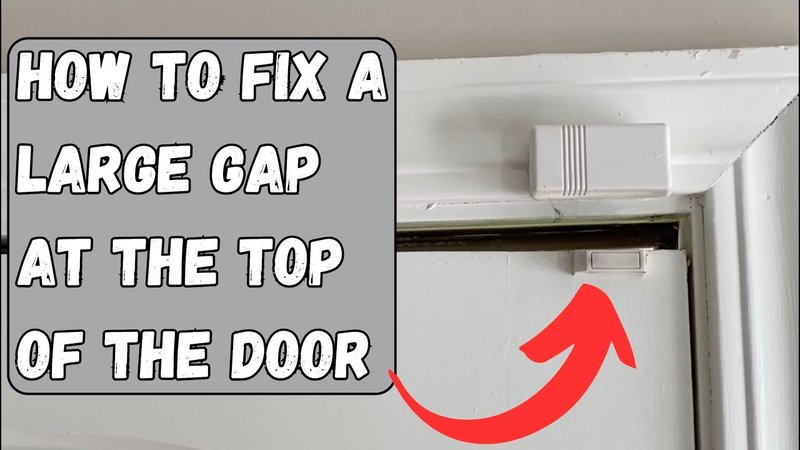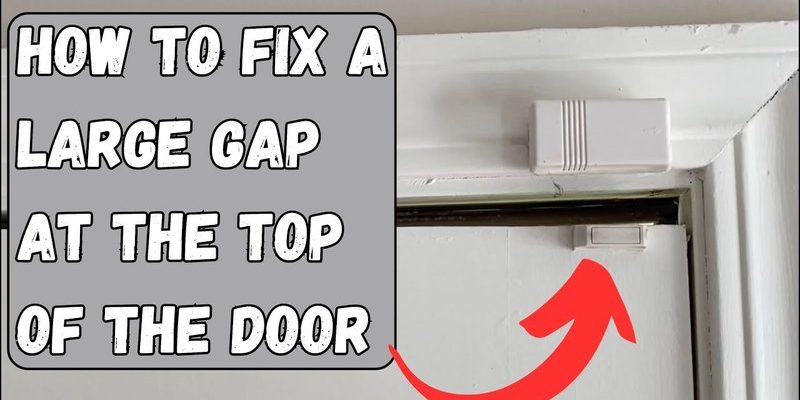
A gap at the top of the door can be annoying and might even lead to other issues, like drafts or decreased security. The cause is often a pesky door hinge that’s out of alignment. So, let’s dig into why this happens and how to tackle the problem.
What Causes Gaps at the Top of Doors?
Understanding what causes gaps at the top of a door can be a bit like peeling an onion. There are layers to consider. The most common culprit is the door hinges. When door hinges are misaligned or damaged, it can throw the entire door off. You might ask, “But how does that even happen?”
Well, over time, hinges can wear down due to frequent use. Imagine using a door hundreds or thousands of times — those tiny screws can loosen, and the weight of the door can cause it to sag. This sagging can create an unwanted gap at the top, leaving your door a little less secure and a lot more drafty.
Another factor is the door itself. If it’s a wooden door, environmental changes can lead to expansion or contraction. Changes in humidity and temperature can make the door swell or shrink. So, if you’ve recently had a humid summer or a dry winter, that could also be affecting your door.
How Door Hinges Work
Before we get into fixes, it helps to understand how door hinges work. Think of door hinges as the supporting actors in a play. They hold the door in place while allowing it to swing open and close with ease. Each hinge has a pin that fits into two plates, allowing smooth rotation.
There are typically three types of hinges used in doors:
- Butt hinges: These are the most common and are mounted on the edge of the door.
- Continuous hinges: Also known as piano hinges, they run the entire length of the door.
- Spring hinges: These automatically close the door after you open it.
Each type of hinge has its own benefits and drawbacks. Understanding this can help when you need to make adjustments or replacements.
Signs of Misaligned Hinges
You might be asking yourself, “How do I know if my hinges are the issue?” Here are some telltale signs. First, check for visible gaps when the door is closed. If you see light peeking through at the top, it’s a good indication something’s off.
Another sign is difficulty in closing the door smoothly. If you notice the door scraping against the frame or needing a push to latch, your hinges might not be in the right position. Lastly, listen for creaking sounds when you use the door — that’s a clear sign the hinges are under stress.
Understanding these signs is crucial. You wouldn’t ignore a check engine light in your car, right? Your door deserves the same attention.
How to Adjust Misaligned Hinges
Now that you know what to look for, let’s get into how to fix those misaligned hinges. Adjusting them is often a straightforward process, and you might be able to do it yourself with just a few tools.
1. Gather Your Tools: You’ll need a screwdriver (preferably a power screwdriver for speed) and possibly a level to ensure alignment.
2. Check the Hinges: Start by examining the screws on the hinges. Are any screws loose? If so, tighten them.
3. Adjust the Hinge: If tightening doesn’t help, you might need to adjust the hinge position. Loosen the screws slightly, then reposition the hinge so the door aligns better.
4. Test the Door: Close the door and see if the gap has improved. If it’s still there, you may need to repeat the adjustments.
Adjusting hinges is often a trial-and-error process. Don’t be discouraged if it takes a few attempts to get it just right.
When to Replace Door Hinges
Sometimes, adjusting the hinges just won’t cut it. If your door is still misaligned after you’ve made adjustments, it might be time to consider replacements. Here’s how to know:
– Worn Out Hinges: If the metal is rusted or the hinge doesn’t pivot smoothly anymore, it’s probably time for new ones.
– Weight Issues: If you’ve upgraded to a heavier door, like a solid wood one, the old hinges might not be able to support it anymore.
– Repeated Problems: If you’ve adjusted the hinges multiple times but the gap keeps returning, that’s a strong sign you need to switch them out.
Replacing hinges isn’t as daunting as it sounds. With some basic tools and a little patience, you can install new hinges yourself.
Preventing Future Hinge Problems
Once you’ve tackled the gap issue, you’ll want to prevent it from coming back. Here are some steps you can take to keep your door functioning smoothly:
– Regular Maintenance: Make it a habit to check the hinges every few months. Tighten any loose screws and make adjustments if needed.
– Keep Hinges Lubricated: Use a silicone spray or grease to keep hinges from rusting and ensure they move freely. A little maintenance goes a long way!
– Control Humidity: If your door is susceptible to environmental changes, consider a dehumidifier or humidity control measures in your home.
Taking these steps can help ensure your door stays aligned, saving you time and hassle in the future.
Gaps at the top of your door can be annoying, but with a little understanding and some DIY skills, you can often solve the problem. Misaligned hinges are usually the main culprit, but with regular checks and maintenance, you can keep your doors in tip-top shape.
Remember, it’s all about being proactive — just like checking your tire pressure before a long road trip. If you ever feel overwhelmed, don’t hesitate to call a professional. After all, every door deserves a snug fit. With the right care, your door will hug the frame just the way it should!
